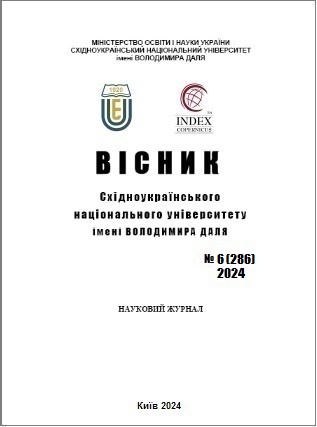Automation of control of the battery-based electric power system of an uncrewed surface vessel
DOI:
https://doi.org/10.33216/1998-7927-2024-286-6-174-181Keywords:
unmanned surface vessel, electric power system, battery, automation, control of technical conditionAbstract
As a result of the analysis of the current state and current research directions in the field of unmanned surface vessels (UAVs), significant prospects for their creation and practical application for solving a wide range of tasks of domestic organizations in the field of maritime economy, defense, environmental monitoring and humanitarian missions have been demonstrated. It has been established that the relevance of the research is due to the growing need to increase the efficiency, autonomy, reliability and safety of operation of such vessels, especially in conditions of a complex and aggressive marine environment. Particular attention is paid to the need to improve automatic systems for monitoring the technical condition of battery electric power systems, which are a key element in ensuring the reliability of the functioning of UAVs during long-term autonomous missions and operations. A detailed analysis of typical technical defects of lithium-ion batteries used to power the electric power systems of UAVs has been carried out. Among the identified defects were: high internal resistance of battery cells, defects in parallel connections, deep discharge of battery cells, disruption of the balancing circuits of battery management systems (BMS), as well as numerous problems associated with the operation of charging stations and converters. Additionally, malfunctions in the operation of chargers were identified, in particular the absence or incorrect operation of reverse polarity protection systems, defects in the operation of LLC drivers, as well as problems with controlling the cooling system of converters. It was established that a significant number of defects may be associated with an insufficient level of quality control during production, incorrect operation and the absence of proper diagnostic support. A comprehensive solution is proposed in the form of specialized automatic control systems that allow continuous monitoring of key parameters of battery operation: voltage, current, temperature, state of charge, as well as implementing the functions of operational diagnostics, defect detection and emergency shutdown of equipment in case of critical deviations from the norm. As part of the research, a generalized structure of the system for automatic control of the technical condition of the battery electric power system of the BNS was developed, which is integrated into the general ship control system. The proposed technical solutions allow significantly increasing the reliability and autonomy of the BNS operation, minimizing the risks of emergency situations during operation..
References
1. Bai X., Li B., Xu X., Xiao Y. A Review of Current Research and Advances in Unmanned Surface Vehicles. Journal of Marine Science and Application. 2022. Vol. 21, No. 2. P. 47–58. DOI:10.1007/s11804-022-00276-9.
2. Bolbot V., Sandru A., Saarniniemi T., Puolakka O., Kujala P. Small Unmanned Surface Vessels—A Review and Critical Analysis of Relations to Safety and Safety Assurance of Larger Autonomous Ships. Journal of Marine Science and Engineering. 2023. Vol. 11, No. 12. Article 2387. URL: https://doi.org/10.3390/jmse11122387.
3. Castano-Londono L., Marrugo Llorente S.P., Paipa-Sanabria E. Evolution of Algorithms and Applications for Unmanned Surface Vehicles in the Context of Small Craft: A Systematic Review. Applied Sciences. 2024. Vol. 14, No. 21. Article 9693. URL: https://doi.org/10.3390/app14219693.
4. Zoria Y. More than 13,000 km² of Ukraine’s sea and inland waters need demining – Emergency Service. URL: https://euromaidanpress.com/2023/05/30/more-than-13000-km%C2%B2-of-ukraines-sea-and-inland-waters-need-demining-emergency-service/.
5. Блінцов В.С., Надточий А.В. Гуманітарне розмінування мілководних акваторій: технології та робототехнічне забезпечення. Суднобудування та морська інфраструктура. 2024. №1(18). С. 4–10. DOI: https://doi.org/10.15589/smi2024.1(18).01.
6. Multi-Purpose Support Ships. URL: https://www.damen.com/vessels/defence-and-security/multi-purpose-support-ships.
7. Nadtochii V., Nadtochiy A., Bugrim L. Development of automatic control system of motion of an unmanned surface ships with a sailing installation. Technology Audit and Production Reserves. 2019. №5/2 (49). С. 45–49. DOI: https://doi.org/10.15587/2312-8372.2019.184643.
8. Guo W., Wang S., Dun W. The Design of a Control System for an Unmanned Surface Vehicle. The Open Automation and Control Systems Journal. 2015. Vol. 7. P. 150–156. URL: https://scispace.com/pdf/the-design-of-a-control-system-for-an-unmanned-surface-3ni6tcd8nj.pdf.
9. Er M.J., Ma C., Liu T., Gong H. Intelligent motion control of unmanned surface vehicles: A critical review. Ocean Engineering. 2023. Vol. 280. Article 114562. DOI: https://doi.org/10.1016/j.oceaneng.2023.114562.
10. Top 5 EV battery chemistries and formats across the world. Automotive Manufacturing Solutions. URL: https://www.automotivemanufacturingsolutions.com/top-5-ev-battery-chemistries-and-formats-across-the-world/45901.article.
11. Fleischmann J. et al. The battery cell component opportunity in Europe and North America. McKinsey & Company. URL: https://www.mckinsey.com/industries/automotive-and-assembly/our-insights/the-battery-cell-component-opportunity-in-europe-and-north-america.
12. Bunting A., Vogl S. Battery cell production in Europe: status quo and outlook. Berlin: VDI/VDE Innovation + Technik GmbH, 2024. 7 p. URL: https://www.ipcei-batteries.eu/fileadmin/Images/accompanying-research/publications/2024-05-BZF_Kurzinfo_Marktanalyse_Q2_engl.pdf.
13. Requirements for direct current (DC) power distribution systems for marine and offshore applications. ABS, 2022. 25 p. URL: https://ww2.eagle.org/content/dam/eagle/rules-and-guides/current/other/293-requirements-for-direct-current-(dc)-power-distribution-systems-for-marine-and-offshore-applications/293-dc-power-reqts-july22.pdf.
14. Fernandez E.A. Marine Electrical Technology: навчальний посібник. Shroff publishers & distributors pvt. LTD., 2011. 1170 p.
15. Charchalis A. Diagnostic and Measurement System for Marine Engines. WSEAS TRANSACTIONS ON SYSTEMS AND CONTROL. 2020. Vol. 15. URL: https://doi.org/10.37394/23203.2020.15.36.
16. Zhang P. et al. Marine Systems and Equipment Prognostics and Health Management: A Systematic Review from Health Condition Monitoring to Maintenance Strategy. Machines. 2022. Vol. 10, No. 2. Article 72. DOI: https://doi.org/10.3390/machines10020072.

